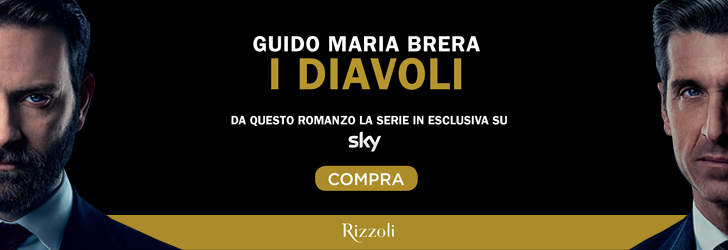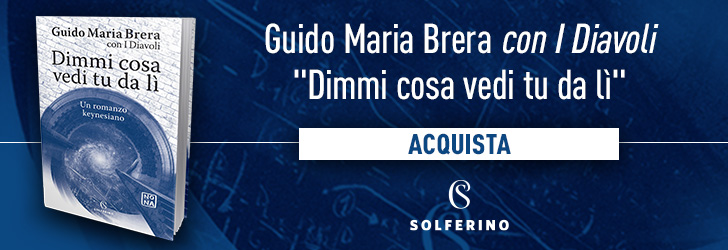
Decodificare il presente, raccontare il futuro
TREDICESIMO-PIANO
mer 8 giugno 2016
WHEN “AARON SWARTZ” SHOOK UP THE WORLD
May 23, 2016
Heads. The kings’ heads are falling down while other ones are lifting up. Hotheads, rebellious heads. Heads looking towards the sky, in an attempt to shorten the distance. Heads demanding to be taken into account, to be valued as the other ones.
Heads all around me.
Heads lying on the floor, as expressive as if they were connected to hidden bodies. Heads floating in mid-air, and yet balanced. Heads creating disturbing shapes. Heads with different structures, ready for the most depraved craniometric analysis. Heads looking at each other and, even when they are not looking, it seems they see each other.
I come up to the first one which shows the ravages of time. Big ears, a contraction of the lips, thick eyebrows. It is pierced with a number of thin metal skewers but it hasn’t lost its calm gaze. The second one looks younger. It has very distinct features, wide forehead, and necessarily small eyes behind a bulky nose. It copes with perforation without concern. And so the other ones around. After all, bronze has to give the impression of endurance.
Goshka Macuga is a Polish artist who lives in London and her exhibition is currently hosted by the City of Milan, in the huge building of Fondazione Prada, an old distillery of nineteen thousand squared meters in the Ripamonti area; it was built at the beginning of the 20th century and was later transformed into an exhibition centre.
The artworks in front of me are a balanced combination of comforting taste and disturbing elements. Such as these heads, balanced on their metal supports. Heads of scientists, intellectuals, writers. Einstein, Marx, Freud. Everything here connects art to memory and technology. A continuous short circuit between past and future. From Big Bang to future perfect. Men, machines, robots, and speaking androids. Ancient and new knowledge. The old dream of illuminist encyclopedism is still alive.
And these head sculptures seem to have a unique molecular structure; they meet at the time and place where cultures and ages are condensed. The metal rods create a system of connections. They combine rather than separating, revealing collective intelligence. Acting as the invisible connections of a telecommunication network.
I walk around, observing the heads’ features, rethinking about the names I learnt in school, and that I am now studying again at the University. I hear the echoes of my steps in this old distillery named Cisterna. I stop in front of Mary Shelley, the author of Frankenstein. Something in between man and machine. It works perfectly here. Frankenstein literally means “stone of Franconia”. You could have picked a better name, Mary Shelley.
My name is Alessandro Grimaldi, but I don’t like it. I don’t like baptismal names. You can’t choose them. And Frankenstein also could not choose. I don’t believe in baptism. My name is Alessandro Grimaldi, in the outside world, but inside – in the invisible network – I have a different name.
The network is similar to this system of thin rods. I follow their connection, their development through the big Cisterna room. I stop by a group of heads. I look down at the booklet in my hands: this part of the exhibition is titled End of History, the bronzes portray the heads of Edward Snowden, Joe Stack, Slavoj Žižek, Jim Jones and… I stop in front of a head with two big eyes.
And there you are, Aaron.
I came for you. To take a closer look to the legend’s expression, to the face of a heretic man, a martyr, a folk hero. I came for you. A 21-year-old boy who wants to see your eyes that will soon be as old as mine. Yours will always be the eyes of a 27-year-old boy. Because bronze stops the time and, perhaps most importantly, because you have chosen to stop the time.
A short life can be complicated and full; it may contain all the contradictions of its historical period. This is why I am here. I want to see how this great artist has immortalized such a genius, to see how she tells your story.
The story of when you were a prodigy teenager and founded – with a few others – Creative Commons in order to promote free exchange of knowledge. When you started up Infogami at the age of 18 and took over Reddit, the social-news website. When you sold it to Wired for tens of millions of dollars. I came for you. When you were my age, the name “Aaron Swartz” was shaking the world. At that time, you were showing an inner path for revolution.
I observe your mouth and eyes’ shape Aaron, I am a University student, I am a hacktivist and my nickname is “Rage”.
I chose it after the “Rage against the machine”, one of my favourite bands. When they first met and separate I was too young. They came back together in 2007, at that time you were creating the digital Open Library.
In order to raise some cash, I do some street trading, I sell and buy shares on financial networks; I take what I need from the system I fight.
When you were my age you were a millionaire, but you have never ascended into the Silicon Valley Olympus, and you have never spoken the misleading Web language. You have been hungry and crazy, but in your way, in our way. You chose the street that crowned you as the defender of free sharing of data and information. Your projects were all focused on the same paradox: information has to be free, because it is cheap enough to be distributed, copied and combined while expensive information is intended to be precious for the receiver. This tension cannot be reduced, it leads to complicated debates on price and intellectual property rights; and it gets even tenser with technological innovation.
Your work, Aaron, helped me to become aware. I clearly understood I had to become a hacktivist. You have changed my life, the life of a university student who is now observing your head in relation to the room. As in 2008, when you took part to a conference on the right of free access to libraries at the Hermitage of the Cupramontana Friars, and you left the meeting with the purpose of dedicating your life to worldwide information sharing. Because when you allow everybody to access a limitless library through technology, the benefit of such knowledge becomes universal. Omnia sunt communia. In the 16th century, the aristocrat Paolo Giustiniani gave up his wealth and retired in Cupramontana.
His finish line is your starting point. Omnia sunt communia, Aaron. The concept of “sharing” is rooted in that of “egalitarianism”. Nowadays, as in the past. I am talking to your head, which seems rooted in the ground; the body is interred and hidden, buried alive.
The heretics of the digital era are connected to the heretics who preached free exchange of goods and heaven on earth. A protestant minority who was looking forward and thinking for everybody else while shouting: Omnia sunt communia.
Goshka Macuga’s bronze does not tell the story of your agony. There are no cuts on your forehead. While a multitude of modern inquisitors was actually against you. They charged you with federal crimes, treating you as a thief or a “pirate”. You were officially persecuted for downloading newspapers and university papers from digital libraries. They were against you because of your way of thinking. For the political nature of your mission. For the words on your blog. “Information is power” or “Only those blinded by greed would refuse to share culture”. Your prosecution ended with your death, Aaron, which is now cancelled by this bronze. And by global hacktivism.
Our rebellion is for each and every one of you. We reveal personal interests. We handle the intellectual light in order to keep information out of the shadow. Citizenship for capitalism is not required, because future does not ask for any document.
I came for you, Aaron, but I cannot stay longer. I want to tell you that it was worth it. And it was worth dying for it. Your suicide is like an execution, the White Terror of this new Thermidor. 95 years of prison and millions of fines for excessive download from a free website can be only described with one word: repression. It is like condemning a person who requests too many books at the desks of a public library.
It was worth it, Aaron. And this iPhone is now a weapon, an instrument to access the network and read the words of a manifesto: “There is no justice in following unjust laws. It’s time to come into the light and, in the grand tradition of civil disobedience, declare our opposition to this private theft of public culture. We need to take information, wherever it is stored, make our copies and share them with the world. We need to take stuff that’s out of copyright and add it to the archive. We need to buy secret databases and put them on the Web. We need to download scientific paper and upload them to file sharing networks. We need to fight for Guerilla Open Access. With enough of us, around the world, we’ll not just send a strong message opposing the privatization of knowledge — we’ll make it a thing of the past. Will you join us?”
Yes Aaron, we are continuing. Such as the message of condolence left by a boy at your funeral. He wrote: “We will continue”. It’s true, we are continuing. A lot of people have joined us. We are currently seeing an unprecedented disclosure and circulation of protected information.
I wanted to tell you this. And I don’t feel stupid even if I am talking to a bronze, because it feels like I am talking to a living entity, someone who has survived and who is immortal. It can be useful to show somebody’s head. This is what Danton said to his executioner, Sanson, on the platform before his beheading: “You’ll show my head to the people, it’s well worth it!”.

